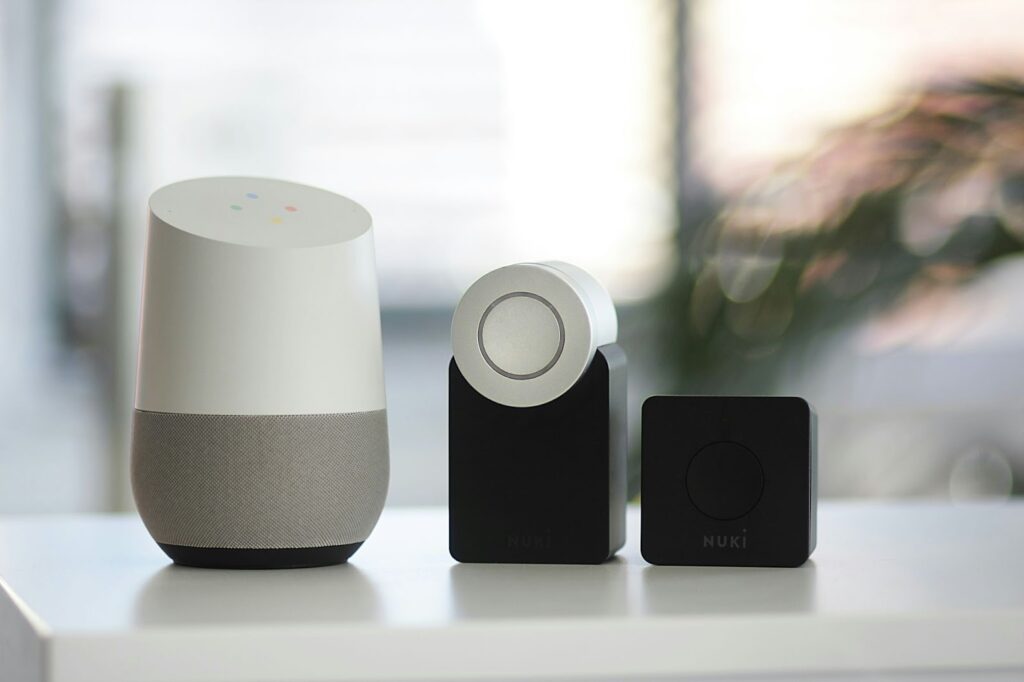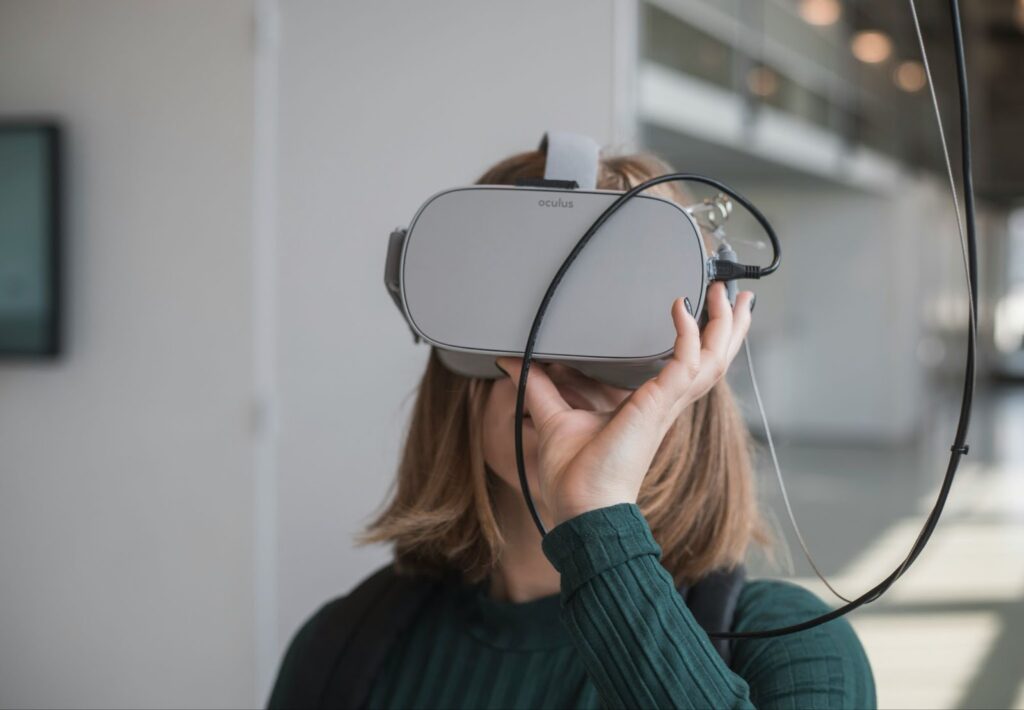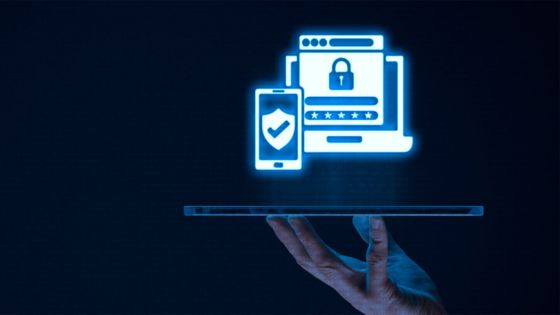The world of rental properties is no longer a cacophony of keys, leases, and late-night calls about leaky faucets. These days, it’s morphing into something much more sophisticated – a symphony of sensors, apps, and algorithms. Technology hasn’t just sheepishly knocked on the door of property management; it’s kicked the darn thing down and insisted on rearranging the furniture.
Smart Homes: When Walls Have Ears

Photo by Sebastian Scholz (Nuki) on Unsplash
No more clunky thermostats and manually locking doors. Today, rental properties are embracing smart technology in quite the frenzy; landlords and tenants alike are relishing in the convenience of smart locks, thermostats, voice-activated lighting, and more.
A tenant running late for work can now lock the door with a tap on their phone while shouting instructions to Alexa about brewing the last cup of coffee. And it’s a win-win for both sides – landlords enjoy better security, while tenants reap the rewards of an ultra-connected lifestyle.
Maintenance Gets a Makeover: Hello, Predictive Repairs
Maintenance requests once involved cryptic descriptions like ‘something’s dripping’ or ‘the thingy by the thing’s broken again,’ but those dark days are over. Predictive maintenance has stepped up to save the day, with the Predictive Maintenance Market having been valued at a whopping $7.8 billion in 2022; some reports suggest that it saves around 12% in overall costs, and extends the lifetime of cranky, aging assets by as much as 20%. Sensors installed in appliances and infrastructure now monitor for wear and tear, alerting property managers before minor issues turn into wallet-draining catastrophes.
It’s like a sixth sense for buildings. When your HVAC system starts buckling under the strain of its existence, it can send out an SOS long before the sweltering summer heat doubles down. It’s proactive instead of reactive, saving time, money, and, potentially, a handful of passive-aggressive tenant emails.
Virtual Reality Tours: No Keys? No Problem

Photo by Maxim Hopman on Unsplash
Open houses used to mean tidying up frantically and praying that potential tenants wouldn’t notice the stain on the carpet. This is where virtual reality tours come in – an absolute game-changer for landlords and prospective renters alike. Armed with a VR headset (or even just a smartphone), renters can now ‘walk through’ properties without ever leaving their couch.
This technology isn’t just a massive convenience; it’s a curtain call for the traditional house-hunting headaches; property listings that don’t feature virtual images reportedly cause disinterest in over 50% of buyers. Plus, landlords can now showcase their properties to a global audience with ease, which means that studio apartment with a ‘quirky’ layout might finally find its perfect tenant.
Another game-changing technology making waves in the rental property industry is interactive property viewing solutions. These tools go far beyond simple pictures or basic videos—utilizing cutting-edge 360 virtual tour and 3D walkthrough software, they enable potential tenants to navigate entire spaces as if they were onsite, all from their devices. This level of immersion not only saves time for landlords and renters alike but also showcases properties with a clarity that traditional methods simply can’t match.
Data-Driven Decisions: Numbers Don’t Lie
Big data has muscled its way into the rental market, offering landlords insights that would make Sherlock Holmes envious; renters’ preferences, seasonal trends, and local market dynamics are just a few of the variables analyzed to optimize pricing, marketing, and tenant satisfaction.
Imagine knowing the exact moment when rents should rise – not because of a whim, but informed through cold, hard analytics. Data takes the guesswork out of property management and makes every decision feel a little more scientific, if you will – far less like a roll of the dice, at the very least.
Streamlining Finances: The Backbone of Modern Property Management
For landlords and property managers, handling finances used to be a painstaking process involving stacks of receipts, endless spreadsheets, and a fair amount of guesswork. Not anymore.
Real estate accounting software now takes the hassle out of everything from rent collection to expense tracking. We’re talking about receiving automated reminders for overdue payments, generating detailed financial reports with a few clicks, or instantly categorizing maintenance costs; it’s efficiency at an entirely new level, saving landlords both time and headaches.
And, of course, the perks aren’t just for the owners, with tenants also benefiting from streamlined financial systems. Payment portals integrated with accounting software, for example, make setting up autopay, viewing detailed payment histories, and even splitting costs among roommates a piece of proverbial cake. Transparency and simplicity in financial transactions also helps to foster trust between tenants and landlords – which, let’s face it, can be just as valuable as the rent itself (well, almost).
In the grand scheme of the tech revolution in rentals, tools like these don’t just crunch numbers; they lay the foundations for smoother operations – and in an industry where every penny counts, that’s no small feat.
Tenant Experience: The VIP Treatment
Modern renters expect more than four walls and a roof; they want an experience. From tenant portals that streamline communication and payments to community-building apps that connect neighbors, technology is transforming how landlords engage with their tenants.
And let’s not forget the rise of co-living spaces. These tech-savvy setups often come with perks like coworking spaces and curated events, turning rental properties into miniature ecosystems of convenience and connection.
A Future That’s Already Here
Rental properties are no longer stuck in the antiquated analog age, and thank goodness for that. With smart homes, predictive maintenance, virtual tours, and data-driven insights, the industry is hurtling toward a future in which efficiency, convenience, and satisfaction reign supreme.
It’s a brave new world out there, and landlords who embrace these changes will find themselves not just surviving but thriving. Tenants, meanwhile, can keep enjoying their app-controlled, data-enhanced lives – all without having to wrestle with a stubborn key in a rusty lock ever again.
- 2shares
- Facebook0
- Pinterest2
- Twitter0



